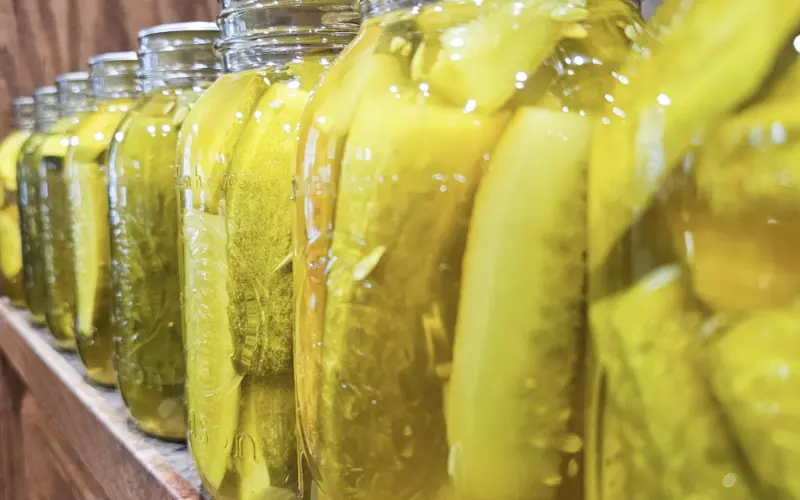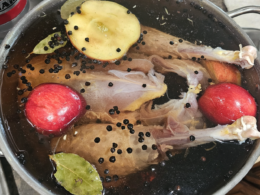Canning your own pickles is a rewarding and fun process that allows you preserve the harvest from your garden all year round. They are one of my kids’ favorite snacks and an easy entry to canning. It is an accomplished feeling, knowing you grew and preserved the pickles yourself. This year, I’ve been growing several different pickling cucumber varieties in my garden, and they have really taken off. The entire process of growing to preserve is not only fulfilling but also ensures that you know exactly what ingredients are in your food. Whether you’re a seasoned gardener or a beginner, or picked up some cucumbers from the farmers market, canning pickles is a fantastic way to make the most of a harvest long after the growing season has ended.
Part 1: Preparing for Pickling
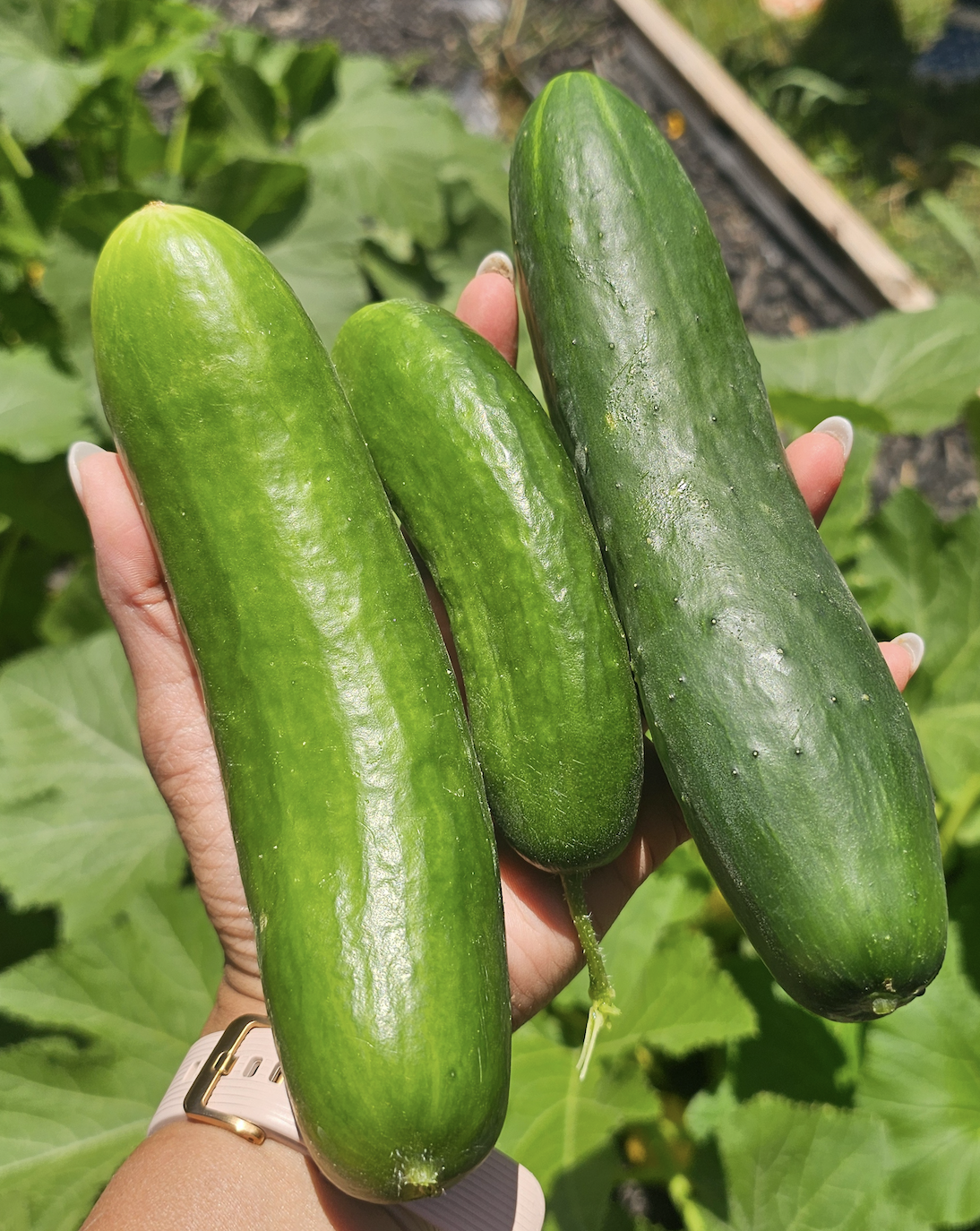
Choosing the Right Cucumbers
Selecting the right cucumbers is crucial for achieving the perfect pickle. Ideal varieties for pickling include Kirby and Boston Pickling cucumbers, known for their firm texture and ability to hold up well during the pickling process. When selecting fresh cucumbers, firm to the touch, and vibrant in color. Avoid cucumbers that are overly large, soft, or have yellow spots, as these can result in soggy or unevenly pickled results. Also, try to avoid using store bought pickles. These have a wax coating on them and normally don’t preserve well over time.
Cleaning and Preparing Cucumbers
Once you’ve selected your cucumbers, the next step is to clean and prepare them for pickling. Start by washing the cucumbers thoroughly with water to remove any dirt or residue. After washing, trim off the ends of each cucumber, as the blossom end can contain enzymes that may cause the pickles to soften. Depending on your preference, you can leave the cucumbers whole, cut them into spears, or slice them into rounds. Each method has its own appeal, whether you enjoy a crisp spear in your sandwich or sliced rounds for snacking. I like to do a variety of all cuts.
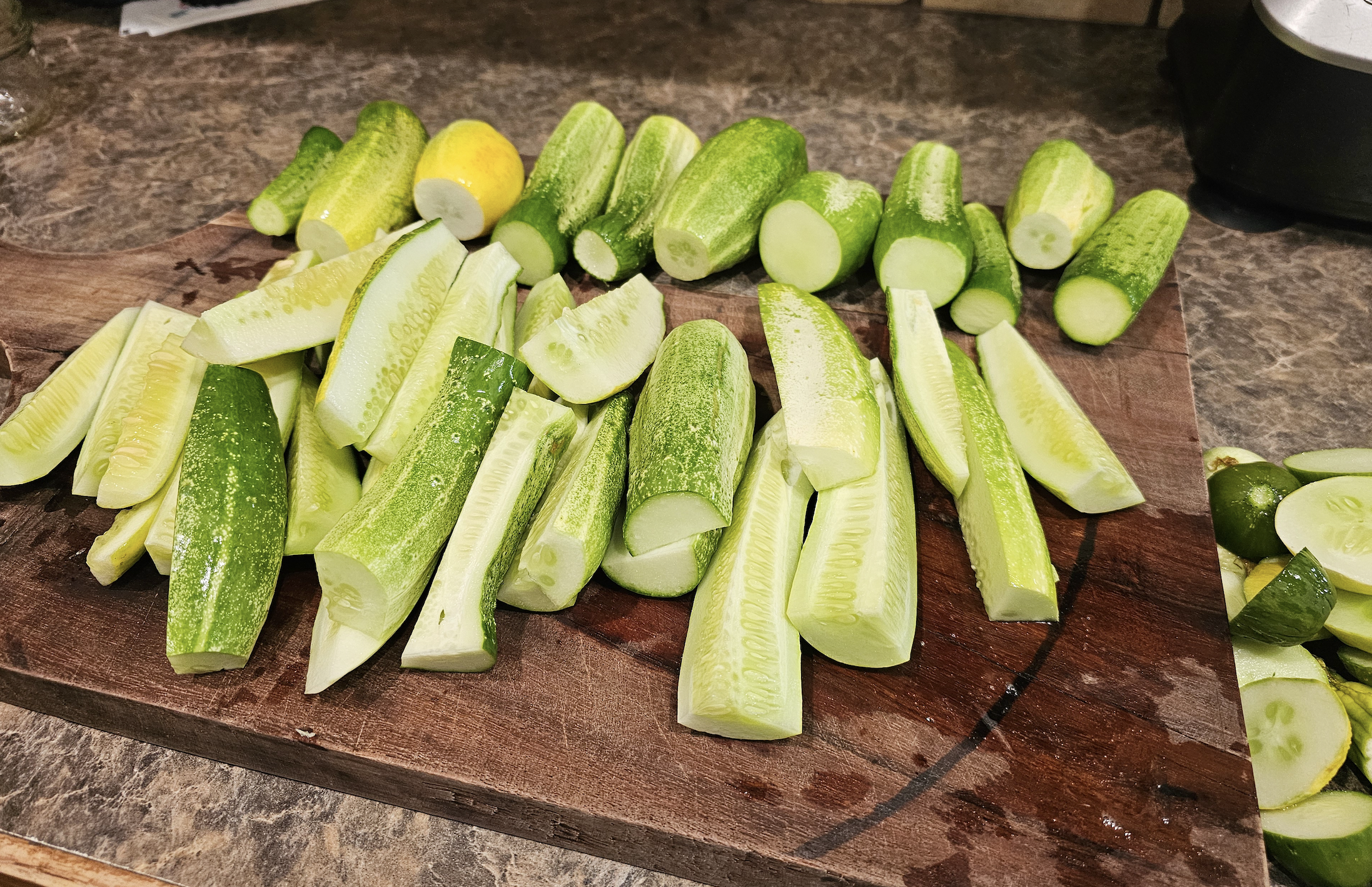
Basic Ingredients
To start the canning process, gather the ingredients needed for your pickles. Vinegar is a key component, and you can use different types such as white vinegar or apple cider vinegar, depending on your flavor preference. Ensure that the vinegar has at least 5% acidity to safely preserve the pickles. Water is also needed to create the brine. Use pickling salt instead of table salt, as it does not contain additives that can cloud the brine. Finally, gather spices like dill, mustard seeds, garlic, and others to add flavor to your pickles. Each spice can create unique and delicious variations, from classic dill pickles to sweet bread and butter pickles. You can also pick up prepackaged spice mixes to make the process easier.
Equipment
This is a waterbath canning method. These are the required equipment:
- Canning jars with lids and bands
- Large pot or water bath canner with a fitted lid.
- Jar lifter
- Lid magnet
- Funnel and ladle
- Clean towels and paper towels
- Cooling rack or large towel
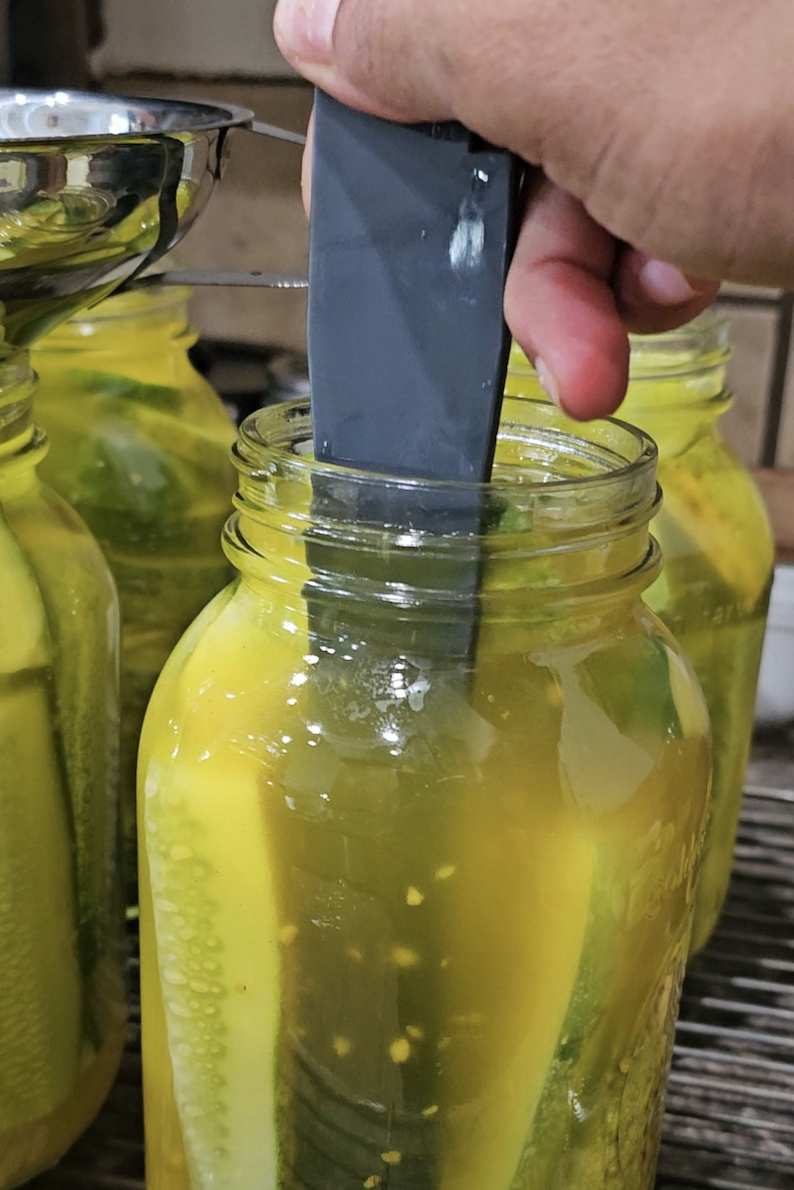
Making the Brine
To prepare the brine, you will need vinegar, water, and pickling salt as the basic ingredients. A typical ratio for a basic pickling brine is 1 part vinegar to 1 part water with about 2 tablespoons of pickling salt per quart of liquid. Next add you seasoning package or pickling spices. Combine these ingredients in a pot and bring to a boil, ensuring that the salt is fully dissolved. This heated mixture will become the base for your pickling brine, providing the necessary acidity and flavor to preserve your cucumbers.
Part 3: Packing and Canning
Sterilization Process
Sterilizing your jars and lids is a crucial step to ensure the safety of your canned pickles. Sterilization kills any bacteria, yeast, or fungi that could spoil the pickles. Begin by washing the jars, lids, and bands and rinsing them thoroughly. Place the jars in a canner, fill it with water to cover the jars, and bring it to a boil. Boil the jars for at least 10 minutes. Simultaneously, place the lids and bands in a separate pot of simmering water for 10 minutes. I like to use Ball sure tight lids. Keep the jars warm to prevent breakage.
Packing and Filling the Jars
Once your cucumbers are prepared and your jars are sterilized, it’s time to pack the jars. Pack the cucumbers tightly into the jars but be sure to leave about 1/2 inch of headspace at the top to allow for expansion.
Next, using the funnel pour the hot brine over the packed cucumbers, again leaving 1/2 inch of headspace at the top of the jars. Use a bubble remover to remove any air bubbles by running it along the inside of the jar. Adjust the headspace, if necessary, by adding more brine. Wipe the rims of the jars with a clean, damp cloth to ensure a good seal. I like to dip the towel into vinegar before wiping to help sterilize the rim.
Sealing and Processing
Place the sterilized lids on the jars and screw on the bands until they are fingertip-tight. Do not over-tighten, as air needs to escape during processing. Place the jars in the water bath canner rack then lower, ensuring they are completely submerged with at least one inch of water above the jars. Bring the water to a boil and process the jars for the recommended time based on your altitude and jar size. Generally, process pint jars for 10 minutes, and 15 minutes for quarts. Once the processing time is complete, turn off the heat and let the jars sit in the water for an additional 5 minutes.
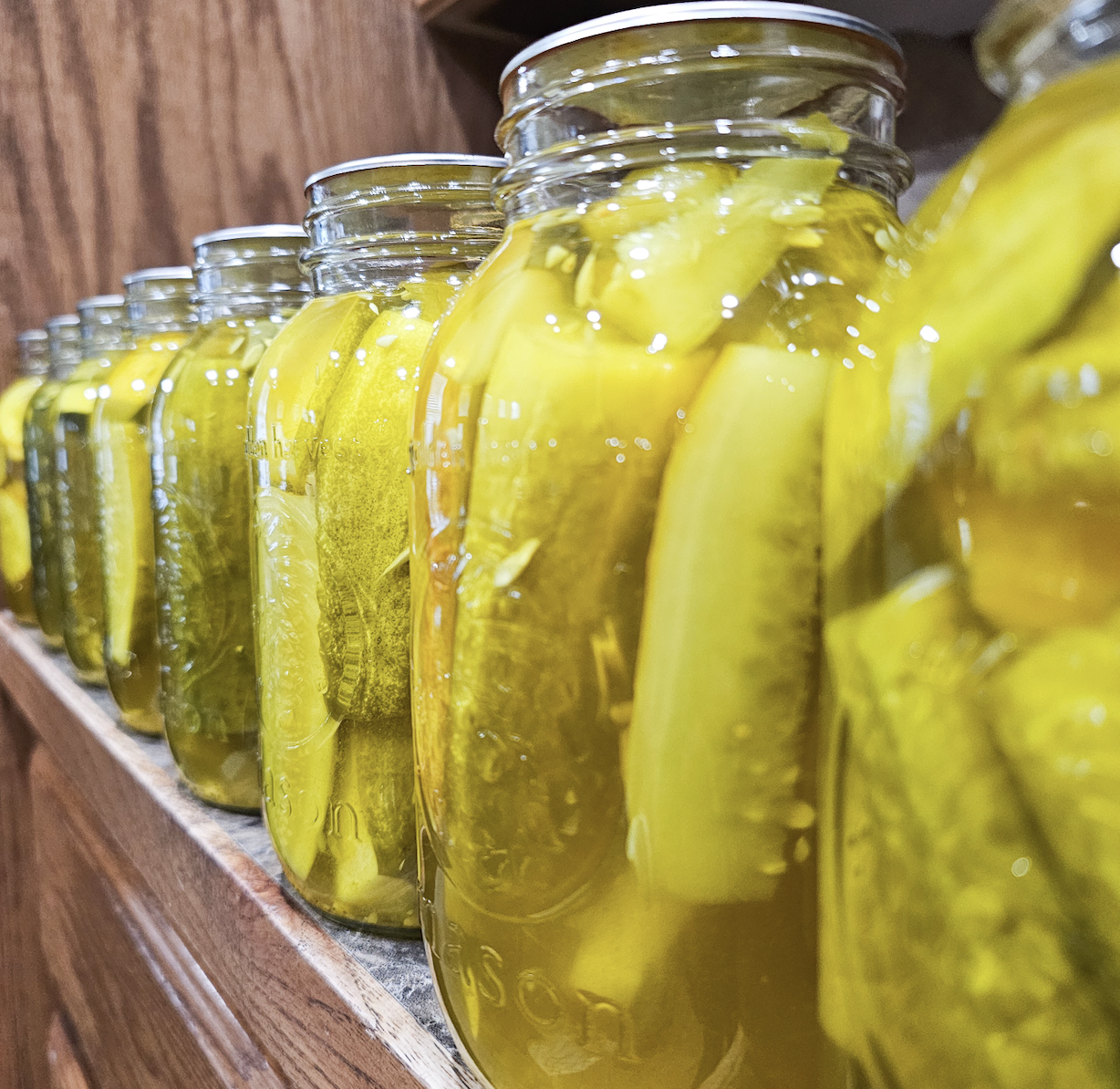
Cooling and Storing
Using the jar lifter tool, remove the jars from the canner. and place them on a towel or cooling rack, leaving space between them to allow air to circulate. Let the jars cool undisturbed for 12-24 hours. During this time, you should hear the “ping” of the lids sealing. I know it is tempting but try not to touch the lids. After cooling, check the seals of the lids. If it does not flex up and down, the jar is sealed properly. If they did not seal put in the refrigerator for immediate use.
Properly canned pickles should last for up to a year. Always, check for signs of spoilage such as an unsealed lid, off smells, or discoloration.
Canning fresh pickles is a rewarding process that allows you to enjoy the flavors of your garden year-round. By carefully selecting and preparing cucumbers, making a flavorful brine, and following proper canning procedures, you can create delicious homemade pickles. Have fun and experiment with different recipes and flavors to find your favorites.

